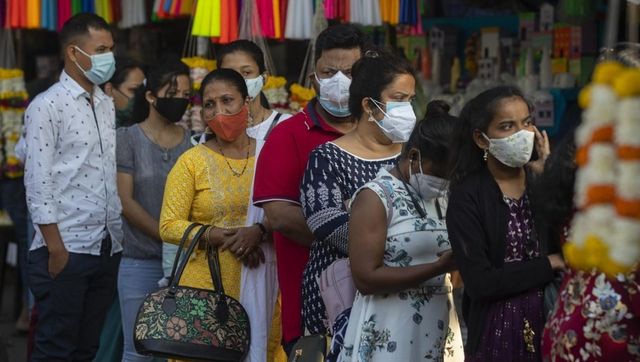H3N2 influenza virus: India reports two deaths, know symptoms, prevention

New Delhi: H3N2 influenza virus has claimed two lives in India. The first death was reported in the southern Indian state of Karnataka, while the second was in Haryana, the neighbouring state to capital New Delhi. This comes at a time when people continue to maintain health precautions due to deadly Covid-19.
India so far has reported 90 cases of H3N2 influenza and eight cases of H1N1 virus.
H3N2 deaths in India
A 82-year-old man from Alur Taluk of Hassan district in Karnataka was the first patient to succumb to H3N2 virus in India. As per the district health officer of Hassan, Hire Gowda died on 1 March due to the virus. He was a diabetic and also suffered from hypertension.
He was admitted to a to hospital on 24 February. The sample, sent for test, confirmed he was infected by the virus on 6 March.
The death in the southern India state comes about five days after Karnataka Health Minister K Sudhakar held a meeting with officials in view of the sudden rise in H3N2 virus infections, also known as the “Hong Kong flu”.
Earlier this week, Sudhakar had said 26 people in Karnataka had tested positive for the H3N2 variant of which two cases were reported from Bengaluru.
He added that children below the age of 15 face more danger from the H3N2 variant and that the variant also infects persons above the age of 60 years.
The second death has been reported in the northern Indian state of Haryana which shares its state border with national capital New Delhi.
Over the past few months, India has been witnessing rise in the cases of flu. Most infections were caused by H3N2 virus and has been leading to more hospitalisations than other influenza subtypes in the country.
In Haryana’s Gurugram, doctors say they are currently witnessing 40 per cent of viral fever cases with H3N2. They said the H3N2 influenza virus is behind the spike in cases of viral infections and respiratory problems across the state.
What are doctors saying?
With the spike in cases, the Indian Medical Association (IMA) has urged doctors not to prescribe antibiotics to patients before confirming whether the infection is bacterial, as they can develop a resistance.
Also, doctors have advised Covid-like precautions, including regular washing of hands and covering nose and mouth with masks.
The Indian Council of Medical Research (ICMR) urged people to cover their mouth and nose while sneezing and coughing, avoiding touching the eyes and the nose.
People have been asked to take plenty of fluids and take paracetamol for fever and body ache.
What is H3N2 virus?
According to Centres for Disease Control and Prevention (CDC), influenza viruses normally circulate in pigs are called “variant” viruses when they are found in people.
Influenza A H3N2 variant virus also known as H3N2v viruses that has infected humans is known as ‘swine influenza viruses’.
The specific H3N2 variant virus was in US pigs in 2010 and during 2011, 12 humans were infected with genes from avian, swine, and human viruses and the 2009 H1N1 pandemic virus M gene, CDC said.
H3N2 virus symptoms
H3N2 symptoms are as follows:
- fever
- respiratory issues like cough and runny nose
- body aches
- nausea
- vomiting
- diarrhea
- chills
- throat ache/sore throat
These symptoms may usually last for about a week, however, some people may witness them for a longer period.
A report by ANI quoted Dr Randeep Guleria, chairman of the Institute of Internal Medicine, Respiratory and Sleep Medicine, and Director of Medical Education, saying the H3N2 virus mutates every year during this time and spreads through droplets.
“H3N2 is a type of influenza virus, which we see every year during this time of the year. But it is a virus which mutates over time called antigenic drift. We had a pandemic many years ago because of H1N1. The circulating strain of that virus is now H3N2 and, therefore, it is a normal influenza strain,” Dr Guleria said.
He further said that H3N2 influenza virus spreads the same as Covid-19, through droplets.
The former AIIMS-Delhi director said that those who have associated comorbidities need to be careful.
How does H3N2 virus spread?
H3N2 can be transmitted from one person to another through droplets released when coughing, sneezing, or talking by an infected individual.
Also, it can spread if someone touches their mouth or nose after contacting a surface that has the virus on it.
Who are at high risk?
Pregnant women, young children, adults 65 years and older, asthma patients, people with neurologic and neurodevelopment conditions are at risk.
Those with blood disorders, chronic lung disease, endocrine disorders, heart and Kidney diseases, liver disorders, metabolic disorders are at risk too.
Others at risk include obese people with a body mass index [BMI] of 40 or higher and those younger than 19 years old who are on long-term aspirin- or salicylate-containing medications.
People with a weakened immune system due to disease such as HIV or AIDS, cancers, or medications are also at risk.
H3N2 prevention and precaution
As the virus attacks the respiratory tract, people should keep a regular check of oxygen level with the help of Pulse Oximeter. If it is below 95 per cent, one must visit to doctor without delay.
H3N2 virus patients should avoid self-medication. The currently recommended drugs – oseltamivir, zanamivir, peramivir, and baloxavir – are available by prescription from the doctor.
For precaution, people must wear a face mask, wash hands regularly and maintain physical distancing.
H3N2 treatment
People must take adequate rest, drink lots of fluids, take over-the-counter painkillers like acetaminophen or ibuprofen to reduce fever.
With inputs from agencies
Read all the Latest News, Trending News, Cricket News, Bollywood News,
India News and Entertainment News here. Follow us on Facebook, Twitter and Instagram.
For all the latest health News Click Here

